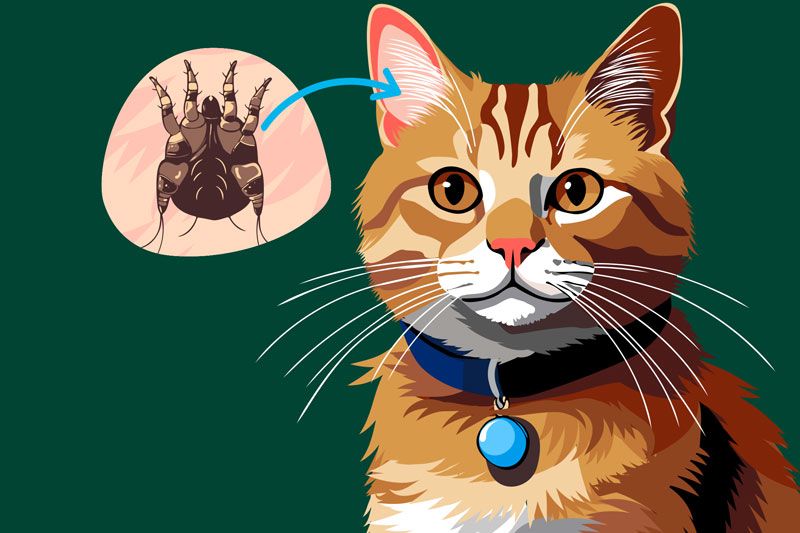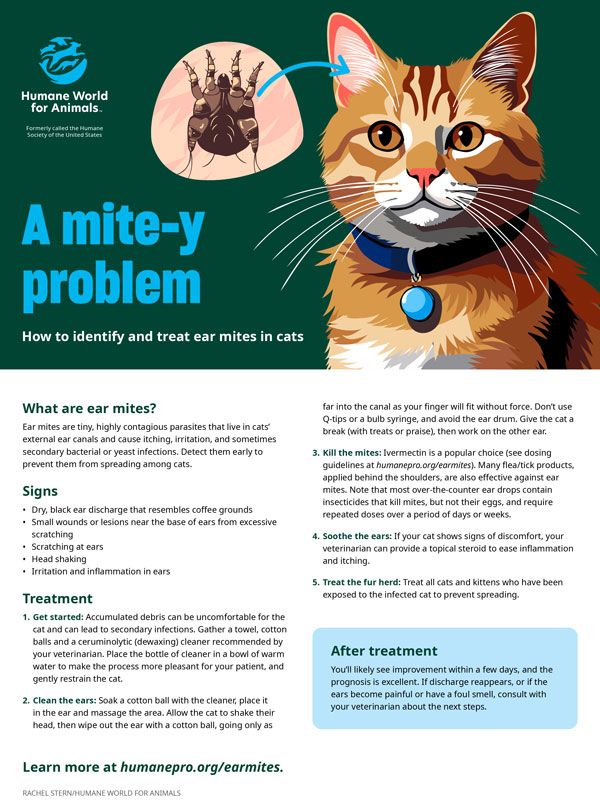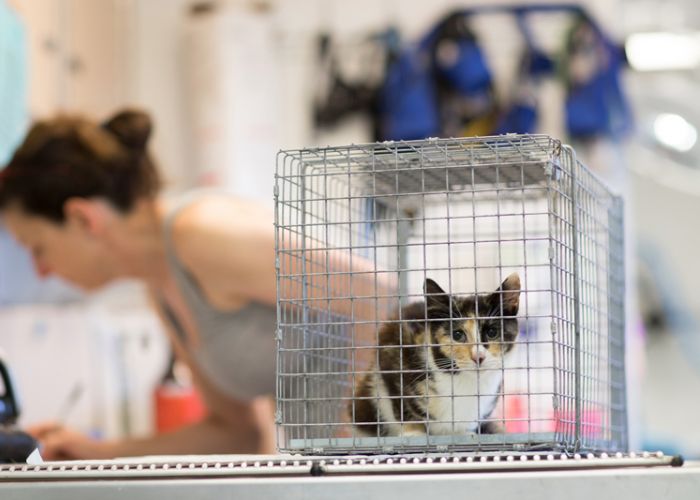Fact sheet: A mite-y problem
How to identify and treat ear mites in cats

What are ear mites?
Ear mites are tiny, highly contagious parasites that live in cats’ external ear canals and cause itching, irritation and sometimes secondary bacterial or yeast infections. Detect them early to prevent them from spreading among cats.
Signs
- Dry, black ear discharge that resembles coffee grounds
- Small wounds or lesions near the base of ears from excessive scratching
- Scratching at ears
- Head shaking
- Irritation and inflammation in ears
Treatment
- Get started: Accumulated debris can be uncomfortable for the cat and can lead to secondary infections. Gather a towel, cotton balls and a ceruminolytic (dewaxing) cleaner recommended by your veterinarian. Place the bottle of cleaner in a bowl of warm water to make the process more pleasant for your patient, and gently restrain the cat.
- Clean the ears: Soak a cotton ball with the cleaner, place it in the ear and massage the area. Allow the cat to shake her head, then wipe out the ear with a cotton ball, going only as far into the canal as your finger will fit without force. Don’t use Q-tips or a bulb syringe, and avoid the ear drum. Give the cat a break (with treats or praise), then work on the other ear.
- Kill the mites: Ivermectin is a popular choice (pay close attention to dosing guidelines). Many flea/tick products, applied behind the shoulders, are also effective against ear mites. Note that most over-the-counter ear drops contain insecticides that kill mites, but not their eggs, and require repeated doses over a period of days or weeks.
- Soothe the ears: If your cat shows signs of discomfort, your veterinarian can provide a topical steroid to ease inflammation and itching.
- Treat the fur herd: Treat all cats and kittens who have been exposed to the infected cat to prevent spreading.
After treatment
You’ll likely see improvement within a few days, and the prognosis is excellent. If discharge reappears, or if the ears become painful or have a foul smell, consult with your veterinarian about the next steps.
For more details on treating ear mites and a photographic, step-by-step guide to cleaning cats' ears, read "What's that bug in your ear, kitty?"
Document








